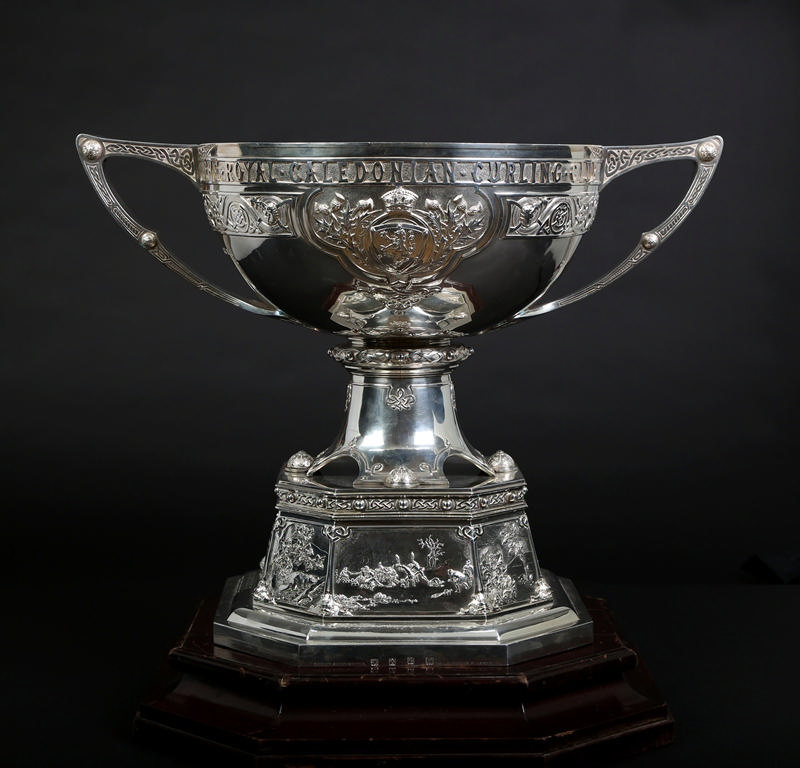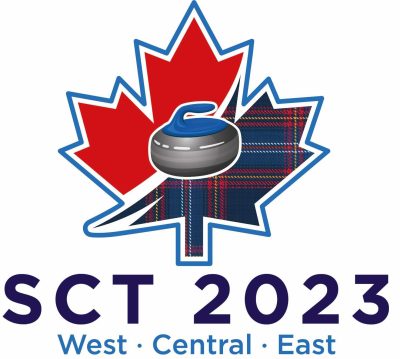STRATHCONA CUP HISTORY (MEN’S TOURS, CANADA & SCOTLAND)
The origins for curlers from Scotland and Canada meeting lie in the 1902 RCCC Annual General Meeting “…..and the following resolutions were passed.
 First, that the RCCC, taking into consideration the oft repeated invitation of brethren in Canada and the USA, is of opinion that the invitation should now be accepted, and decides to send out in the coming winter a representative team, in the name and under the auspices of the RCCC, to play such matches as may be arranged, and to convey to curlers at the various centres to be visited the hearty congratulations and good wishes of the mother club.
First, that the RCCC, taking into consideration the oft repeated invitation of brethren in Canada and the USA, is of opinion that the invitation should now be accepted, and decides to send out in the coming winter a representative team, in the name and under the auspices of the RCCC, to play such matches as may be arranged, and to convey to curlers at the various centres to be visited the hearty congratulations and good wishes of the mother club.
Second, that a special committee be now appointed with full power to select the team and make all necessary arrangements for the Canadian tour.
Third, that this special committee be the committee of management, with power to add to the number, with the suggestion that such additions so made shall be fairly representative of the different districts and provinces of the RCCC.
Fourth, that the Secretary of the RCCC be authorised to grant the Special Committee (Canadian Tour) out of the funds of the RCCC, if found necessary, a sum not exceeding £200 towards the central fund to meet expenses.”
From over 200 applicants a team of 25 curlers were selected to represent Scotland on the inaugural Canadian Tour led by the Rev. John Kerr of Dirleton. The itinerary for first tour was that the team would arrive in Halifax, Nova Scotia around the end of December 1902 and travel through Montreal, Quebec, Ottawa, Toronto and Winnipeg before crossing the border to Minneapolis and St. Paul, Chicago and New York. The whole tour would take 40 days but allowing for ocean and railway travel it was anticipated that the team would be absent for about two months! “It will be seen that the programme is an ambitious one, but the committee felt strongly that if things were worth doing, it was worth doing well, and they have every confidence that the members of the team will prove in every respect worthy of the high trust committed to them, namely, that of upholding the reputation of the Royal Caledonian Curling Club”.
The success of the tour was reflected in a letter sent from Peterboro’ in Ontario to the RCCC which stated, “I congratulate you in the Royal Caledonian Curling Club that this long expected visit has been so happily carried out, and I trust that in the years to come it may continue to be a fruit on both sides of the Atlantic……….”
Encouraged by such comment, the RCCC at its Annual Meeting in July 1908 decided to “unanimously and enthusiastically to invite a team of Canadians to Scotland and to return if possible the hospitality shown by Canada to the curlers from the mother country in the winter of 1902, it was felt that notice given was very short, but the eager desire on the part of all concerned was that such a visit should come off during the year which Lord Strathcona was President of the RCCC, his Lordship being such a unique connecting link between Scotland and Canada, so much honoured by his countrymen on both sides of the Atlantic.” Once news returned from Canada that the invitation had been accepted there was “unmingled delight as there was a general expectation that the visit of the Canadians to Scotland like that of the Scots to Canada would not only still further strengthen the bond of friendship between those who are kinsmen but……………. would handsomely avenge any defeat sustained by the Scots in their visit to Canada, which by some strange system of perversion had been very much exaggerated”!!!
That first visiting Canadian team was gathered in the space of two or three months and included representatives of every district in Canada from Halifax to Dawson City in the Yukon.
In Scotland invitations were drawn up and issued to Clubs and Provinces and “a most gratifying response to this communication was received by the Committee, for virtually the whole of Scotland was prepared to receive and offer hospitality to the Canadians”. The organising Committee had its main difficulty in the form of whether the matches would be played in the open, or in the covered artificial ice-rink at Crossmyloof in Glasgow which had been placed at the services of the RCCC in the event of John (not Jack!) Frost not having the decency to provide natural outdoor ice for the occasion.
Apart from visits to the various districts of Scotland it was “in the trio of test matches arranged by the Committee that Greek would meet Greek, and the momentous decision be given on the blackboard as to whether Canada or Scotland held priority in curling fame. To this great arbitration keen zest was added by the presentation of the noble President, Lord Strathcona, of a handsome Challenge Cup …………. and which it would be averred is without a superior among curling trophies at home and abroad. This splendid trophy, which was selected in competition from a number of designs, is cup shape in form, with two handles. It measures about 20 inches in height and 14 and a half inches in diameter. The decoration, which is chiefly Celtic in character, is artistically applied. A band of Runic entwined work and circles the upper part, and is continued on the handles, whilst round the top is the wording in applied letters: ‘Presented by Lord Strathcona and Mount Royal to the Royal Caledonian Curling Club’. On the silver octagonal base of eight panels there are representations of a Scottish curling scene, a Canadian curling scene, and also views of Edinburgh and Stirling castles. Additionally other panels show a beaver, a maple tree and a scotch fur with a thistle in the foreground. Two panels have been reserved to inscribe the winners names and the other the inscription, which coupled with the inscription that the rim of the cup reads “Presented by Lord Strathcona and Mount Royal to The Royal Caledonian Curling Club to Commemorate His Presidency of the Club and of the First Visit of a Canadian Curling Team to Scotland, January 1909”.
John Frost did not oblige and the three test matches against Scottish Provinces were held at Crossmyloof Ice-rink with six rinks playing on each day. The first test match gave a score of 112 to 70 in favour of the Canadians and they followed this up with 29 shot and 30 shot victories in the remaining two to enable the Canadians to win the coveted cup by 101 shots. Philosophically, one of the defeated Scottish hosts remarked, “it micht have been better, but it micht have been waur”.
Scots returned to Canada in 1912 with the Canadians successfully retaining the cup although it was noticed that in the test matches, the loss per rink by the Scots was only on average one and a half shots per game. The Scottish team captain, Colonel Robertson-Aikman, further reported that in his opinion “this was a record that, I contend, after the performance of the Canadian curlers in Scotland three years ago we need not be in the least ashamed of”. He further claimed that the Scots were at a disadvantage in that the Canadians played short games of only 12 heads when normally the Scots would expect to play 16. The test matches however were over 18 heads but again the Scots wanted more – 21! Further handicaps noted were that they had to play on a 6ft. radius circle rather than a 7ft. circle! Other excuses used at the time included the fact there was a tremendous borrow sometimes as much as 8 ft. which in his opinion “the consequence of such a borrow is that the game is altered in its character. You cannot guard a stone as you do here.”
The final excuse used for the tour was “…..but the strongest man on a tour of two months must be below his best when continually travelling and banqueting”!!!
The First World War prevented any further tour that decade but in 1921 the Canadians returned to Scotland and on this occasion Scotland lifted the Strathcona Cup for the first time by a score of 3-2 over the 5 test matches. However two winters later Canada regained the Strathcona Cup, winning 5-0 in the test matches and by an emphatic 210 shot margin.
Canadian curlers returned to Scotland in 1926 where the home country were victorious by 4 to 1 in the test matches but that was the last tour for some 12 years until 1938, shortly before the outbreak of the Second World War, when Scotland crossed the Atlantic once more.
The War prevented any further visit until 1949 when Scotland won the Strathcona Cup in Canada for the first time. On this occasion there was a change from the normal format whereby all games in the tour, not just nominated test matches, counted to the overall result. One game was reported as “ keen interest was shown in all our games and at Nelson, B.C., we had a crowd of 2000 spectators watching us, although play did not start until 8.30 p.m. and continued until 1 o’clock in the morning!”
Subsequent tours reverted to the format of test matches deciding the destination of the cup with the home nation being victorious on each of these occasions.
However, this format was changed when the Canadian tourists came to Scotland in 1979 and from that tour onwards all games have counted equally to the eventual outcome of the trophy.
Canada regained the trophy on their last visit to Scotland in 1998 and currently have 10 victories to 8 of Scotland but the Strathcona Cup is more than about winning and losing. The very essence of it is to ensure that curlers from Scotland and Canada have the opportunity to meet every five years on one side of the Atlantic or the other to further the friendship between curlers of the two countries and to uphold the traditions of the roarin’ game.
With these objectives in mind 56 curlers from Scotland will, unlike their forefathers, touch down rather than step ashore in Canada on the 8th January 2003. The East Tour under the Captaincy of Donald Whyte, President of the Royal Caledonian Curling Club, will similar to those on that first tour, start in Halifax, whilst the West Tour will start in Winnipeg, another of the cities on that original itinerary, under the Captaincy of Ainslie Smith.
For all curlers it will be an opportunity to mark the Centenary of the first ever Scottish Curlers in Canada when 412 games are played across Canada from Halifax in the East to Victoria in the West.
The above is shared with kind permission by

All Rights Reserved – May not be reproduced without written consent from Scottish Curling
Acknowledgement
This brief history together with the results of past Strathcona Cup Competitions has been compiled from reports in the Annuals of the Royal Caledonian Curling Club, extracts which are reproduced here with kind permission of the RCCC.
Alan Stanfield
